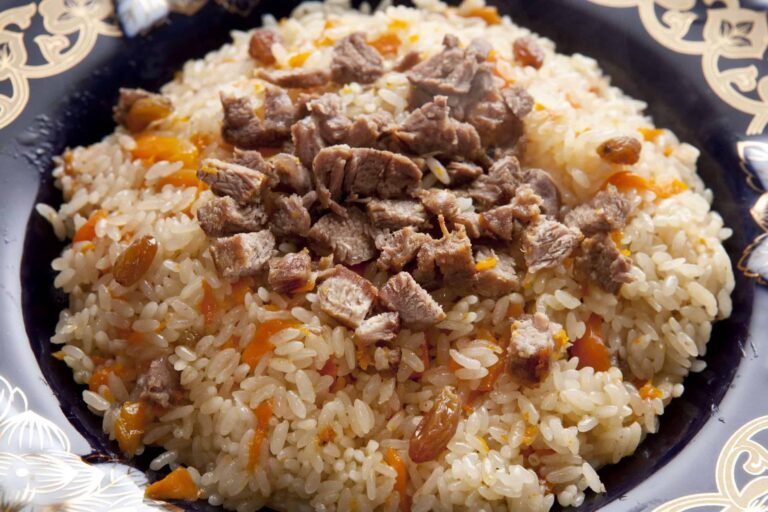Introduction: Understanding Turkmen Cuisine
Turkmen cuisine is a reflection of the country’s rich cultural heritage and history. Influenced by the nomadic lifestyle of the Turkmen people, the cuisine is known for its hearty dishes that are high in protein and carbohydrates, with a focus on meat, dairy, and grains. The cuisine is also heavily influenced by the region’s geographic location, with its proximity to Iran, Afghanistan, and Russia.
Cultural Celebrations in Turkmenistan
Turkmenistan is a country that celebrates its culture and traditions with great pride. The country has a rich history of cultural celebrations, including the national holiday of Turkmenistan’s Independence Day on October 27th. Another significant cultural celebration is Nowruz, a festival that marks the beginning of spring and the New Year in Turkmenistan. This festival is celebrated throughout Central Asia and is a time for families to come together and enjoy traditional food, music, and dance.
Influence of Cultural Celebrations on Turkmen Cuisine
Cultural celebrations have had a significant influence on Turkmen cuisine. Many traditional dishes are prepared during these celebrations, using ingredients that are symbolic of the occasion. For example, during the Nowruz festival, traditional dishes such as Ash, a soup made with lamb and chickpeas, and Samanu, a sweet pudding made from germinated wheat, are served. These dishes are an integral part of the celebration and are enjoyed by families as they gather to commemorate the occasion.
Traditional Turkmen Dishes with Cultural Influences
Some traditional Turkmen dishes have cultural influences that can be traced back to celebrations and events. One such dish is Plov, a rice dish that is often served during weddings and other celebrations. Plov is made with lamb, onions, carrots, and rice, and is seasoned with cumin, garlic, and other spices. Another dish that is often served during celebrations is Shurpa, a hearty soup made with lamb, potatoes, carrots, and other vegetables.
Festive Foods for Special Occasions in Turkmenistan
In Turkmenistan, festive foods are an important part of special occasions. During weddings, dishes such as Lagman, a noodle soup with meat and vegetables, and Manti, a type of dumpling stuffed with meat and onions, are served. During religious holidays, traditional dishes such as Kebab, grilled meat skewers, and Samsa, a pastry filled with lamb or beef, are popular.
Conclusion: A Rich Blend of Culture and Cuisine
Turkmen cuisine is a reflection of the country’s rich cultural heritage and history. Influenced by the nomadic lifestyle of the Turkmen people and the region’s geographic location, the cuisine is known for its hearty dishes that are high in protein and carbohydrates. Cultural celebrations have had a significant influence on Turkmen cuisine, with traditional dishes being prepared during these occasions. From Plov to Kebab, Turkmenistan’s cuisine is a rich blend of culture and cuisine that is enjoyed by locals and visitors alike.


